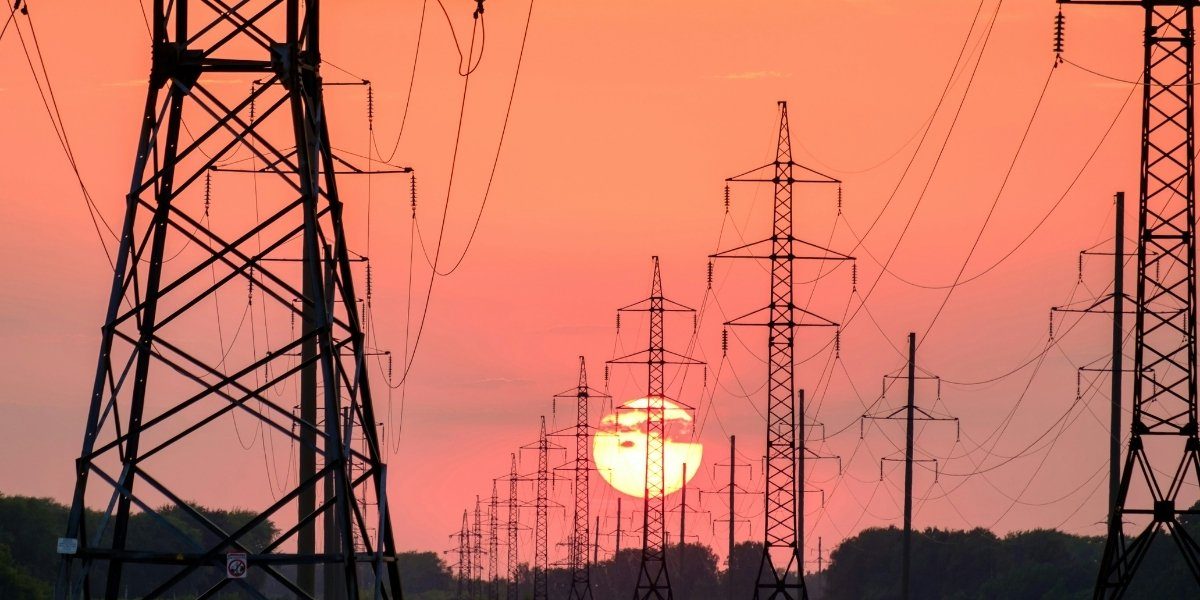What Drives the Complexity of U.S. Power Consumption?
The United States’ energy consumption is a vast and intricate tapestry woven from a variety of sources, sectors, and regional differences. Understanding the full picture requires examining the factors that drive how, when, and why energy is used across the country. The U.S. is one of the world’s largest consumers of energy, reflecting its diverse economy, population size, and lifestyle patterns. Power consumption is influenced by industrial activities, transportation needs, residential and commercial demands, and technological advances, each contributing unique threads to the overall energy fabric.
Regional variations in climate, infrastructure, and resource availability further complicate the energy landscape. For instance, colder northern states require more heating energy during winter months, while southern states see spikes in electricity use due to air conditioning in summer. Urban and rural differences affect consumption patterns, with dense cities often relying on different energy mixes than less populated areas. These variations necessitate a flexible and robust energy grid capable of balancing supply and demand across diverse conditions. The evolving needs of a modern society continue to shape how energy is consumed and managed in the U.S.
Read Also: Role of Renewable Energy in Fighting Climate Change
Energy consumption also reflects economic and social trends. As technology advances, new appliances and devices contribute to electricity use, while shifts in manufacturing and transportation impact fuel demand. Increasing awareness of climate change and sustainability has prompted changes in how energy is sourced and utilized. Renewable energy adoption, efficiency improvements, and policy initiatives all interact with consumption patterns. Deconstructing the U.S. power consumption tapestry thus involves understanding not only current usage but also the dynamic forces that will shape its future.
How Do Different Energy Sources Contribute to U.S. Power Consumption?
The U.S. energy mix is diverse, combining fossil fuels, nuclear power, and a growing share of renewables. Historically, coal, natural gas, and petroleum have dominated, supplying much of the country’s electricity, heating, and transportation fuel. In recent decades, however, there has been a notable shift toward cleaner energy sources driven by environmental concerns and technological progress.
Natural gas has become the largest source of electricity generation, valued for its abundance and lower emissions compared to coal. Its flexibility helps balance the grid, accommodating fluctuations from intermittent renewables like solar and wind. Coal’s share has declined significantly but still plays a role, especially in certain regions and industrial applications. Petroleum remains crucial primarily for transportation, powering vehicles and aviation.
Renewable energy sources—including solar, wind, hydroelectric, and biomass—have expanded rapidly. Advances in technology and falling costs have made renewables more competitive, while federal and state incentives promote their growth. Solar and wind, in particular, have seen impressive increases in capacity and output. Nuclear energy, though controversial in some circles, continues to provide a stable, carbon-free supply of power, especially in certain states. The interplay of these sources creates a complex, evolving energy mosaic that meets the country’s vast and varied demands.
What Role Do Different Sectors Play in Energy Consumption?
Energy consumption in the U.S. can be broken down into four main sectors: residential, commercial, industrial, and transportation. Each sector presents distinct patterns and challenges, contributing differently to overall power use.
The residential sector includes homes and apartments, where electricity powers lighting, heating, cooling, appliances, and electronics. Energy demand here is heavily influenced by lifestyle, building design, and local climate. Increased adoption of energy-efficient appliances and smart technologies has helped moderate consumption, but growing device usage offsets some gains. Seasonal variations also impact residential energy use, especially for heating and cooling.
Commercial buildings—offices, retail stores, schools, and hospitals—represent a substantial portion of electricity consumption. These facilities often operate long hours and rely on lighting, heating, ventilation, air conditioning (HVAC), and specialized equipment. Energy management in commercial settings increasingly focuses on sustainability and cost savings, driving investments in efficiency upgrades and renewable integration.
The industrial sector consumes the most energy overall, powering manufacturing, mining, agriculture, and construction. This sector uses energy not just for electricity but also for process heat, transportation, and material production. Its consumption patterns depend on economic activity, technological advancements, and energy prices. Industry’s move toward cleaner fuels and improved efficiency is critical for reducing overall emissions.
Transportation is a major energy consumer, primarily dependent on petroleum products like gasoline and diesel. Cars, trucks, airplanes, and ships collectively drive demand in this sector. Efforts to electrify transportation, improve fuel efficiency, and develop alternative fuels are reshaping consumption patterns. The transportation sector’s transition is key to broader energy and environmental goals.
How Are Policy and Technology Influencing U.S. Power Consumption?
Government policies at federal, state, and local levels play a vital role in shaping energy consumption patterns. Regulations and incentives encourage energy efficiency, emissions reductions, and renewable adoption. Examples include fuel economy standards for vehicles, building codes promoting efficient construction, and tax credits for clean energy projects. These policies aim to balance economic growth with environmental protection and energy security.
Technological innovation also drives changes in power consumption. Smart grid technologies enhance the efficiency and reliability of electricity distribution, allowing better integration of renewables and demand response programs. Advances in battery storage and electric vehicles are transforming how energy is produced, stored, and used. The rise of distributed energy resources—like rooftop solar panels and microgrids—empowers consumers and communities to participate actively in energy systems.
Data analytics and automation enable more precise energy management across sectors, optimizing usage and reducing waste. For example, smart thermostats and energy management systems help households and businesses lower consumption without sacrificing comfort. As technology continues to evolve, its integration with policy frameworks will be critical in steering U.S. power consumption toward sustainability and resilience.
What Challenges and Opportunities Lie Ahead for U.S. Energy Consumption?
The future of U.S. power consumption is shaped by a mix of challenges and opportunities. One major challenge is the need to decarbonize energy systems to address climate change while maintaining affordability and reliability. Transitioning away from fossil fuels requires significant investments in infrastructure, technology, and workforce development. Balancing economic growth with environmental responsibility remains a delicate task.
Energy equity is another pressing concern. Ensuring that all communities have access to affordable, reliable, and clean energy is essential for social justice and economic inclusion. Disparities in energy access and cost burden affect vulnerable populations disproportionately, calling for targeted policies and programs.
Read Also: How Clean Energy Is Reshaping Modern Business
At the same time, opportunities abound in the shift to a cleaner energy future. Expanding renewables, enhancing energy efficiency, and modernizing grids can drive innovation and job creation. Electrification of transportation and buildings opens pathways for reducing emissions and improving air quality. Moreover, emerging technologies like hydrogen and advanced nuclear hold promise for diversifying the energy mix further.
Collaboration among government, industry, and consumers will be key to navigating these complexities. By embracing integrated approaches that consider technological, economic, and social factors, the U.S. can weave a resilient, sustainable, and inclusive energy tapestry that meets the needs of today and tomorrow.








